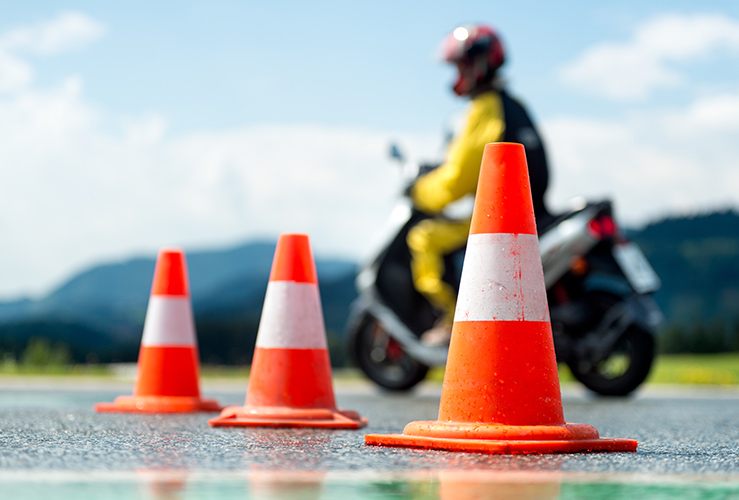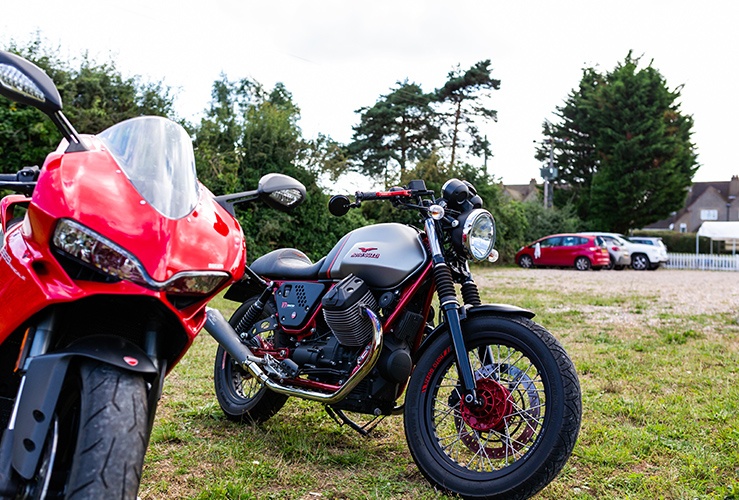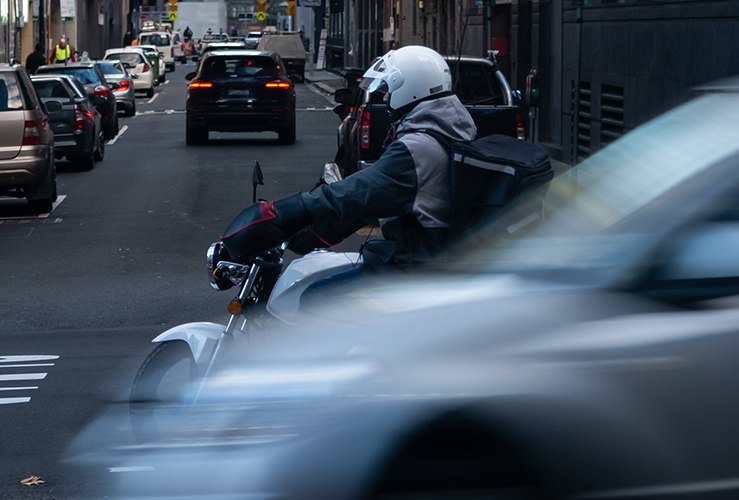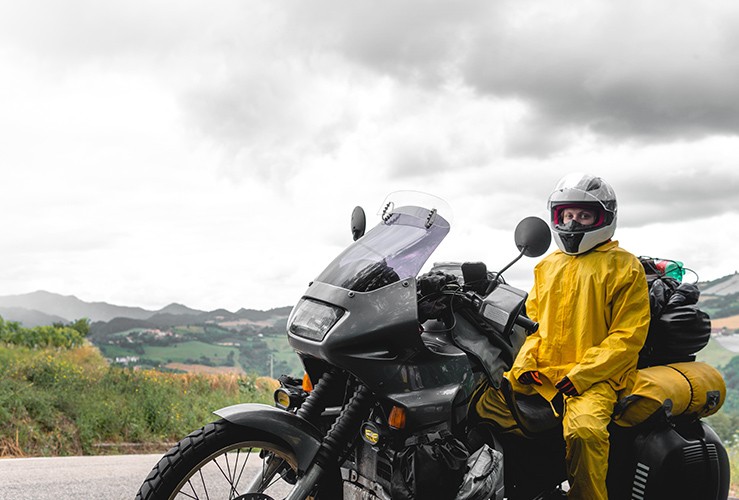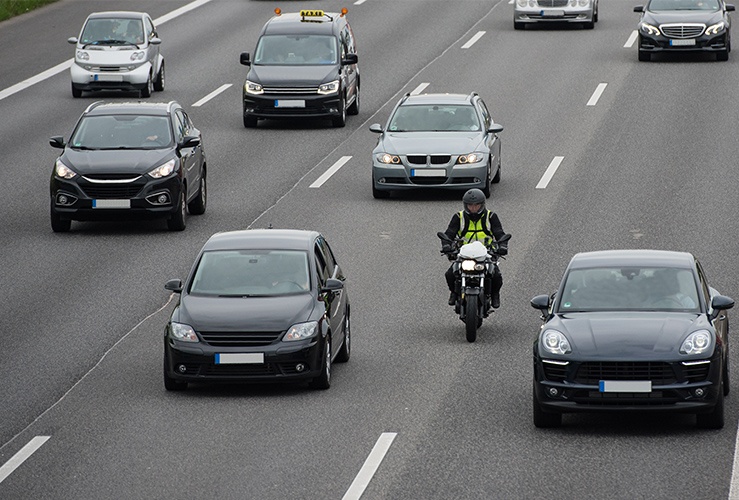Riding a motorcycle has become safer in recent years - but with an uptick in fatalities in 2022, there's no room for complacency
Motorcycle-related injuries and deaths have fallen steadily over the last two decades. Fatalities reduced by 40% from 2004 to 2022, while serious injuries fell by 35% in the same period. However, there was a 13% uptick in deaths between 2021 and 2022, although overall motorcycle traffic also increased by 12% over the same 12 months.
While the general trend is one of increased safety for motorcyclists, there is no room for complacency.
Read our motorcyclist safety tips - whether you're new to riding or have many years of experience under your belt.
Understand the importance of training
When it comes to how to be safe on a motorcycle, it goes without saying that getting properly trained is essential before you can ride on public roads safely (and legally). Alongside your CBT training and passing your motorcycle licence exam, you might consider an advanced motorcycle training course. The more on-the-road scenarios you're familiar with, the safer you'll be.
Learning how to ride a motorcycle safely is also critical if you plan to use your motorbike abroad. Sadly, many Britons get injured overseas while riding a motorcycle - a situation not helped by the fact that, in some countries, having a motorcycle licence isn't always a prerequisite for renting a motorcycle
Wear safety gear and colourful clothing
In terms of safety gear, the only UK legal requirement is a crash helmet. Indeed, wearing head protection is rule number one when it comes to safety on motorbikes. However, a good pair of leather trousers and a riding jacket could make a huge difference if you do come off your bike - reducing or preventing nasty scrapes. Likewise when it comes to sturdy gloves and boots. A common refrain among experienced riders is “dress for the slide, not the ride”.
You should also consider buying a high-visibility jacket, to ensure you are visible to other road users. Many accidents result from motorists failing to notice bikes - sometimes with disastrous consequences. A hi-viz jacket costs around £20 - but could save your life.
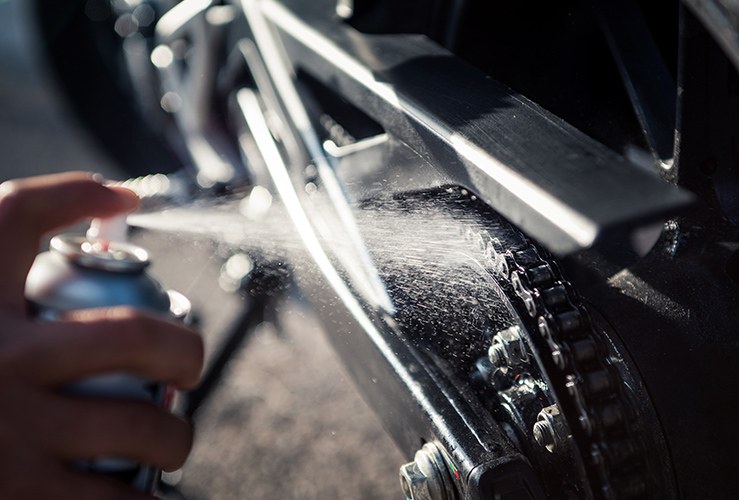
Check your bike before you set out
You might have tremendous riding skills - but it's all for nothing if your bike is not in good working order. As such, check your motorcycle's safety before you set out on a trip. Look for issues with the brakes, tyres, chain and controls. Get acquainted with how your bike is meant to function by reading your owner's manual.
Don't be influenced by other riders
Going out on the road with friends is one of the great joys of owning a motorbike - but not all of us ride the same way. Travelling as part of a group might make you ride faster than you normally do, or take more risks. As such, riding at your own pace could be one of the most useful pieces of motorcycle advice you hear. Some motorcyclists will always be cautious - if this sounds like you, don't be tempted to push yourself beyond your limits when riding with others, even if you end up at the biker cafe last!
Anticipate the road ahead
It's important not to assume motorists can see you - even if you're positioned in the middle of the road, about to turn into a junction. Drivers are often only scanning for vehicles their own size and can fail to notice pedestrians, cyclists - and motorcyclists.
Be aware of what could happen in any given scenario - including worst-case situations. A motorist is far more likely to come out of a collision unharmed; the same cannot be said of motorcyclists.
Learn about lane positioning
The position you occupy in a lane can have a huge impact on how visible you are to other road users. This optimum position can vary depending on the circumstances - for example, whether or not a vehicle pulling out from a junction can see you easily, leaving enough space for other vehicles when taking blind bends, or being able to avoid an oncoming overtaking vehicle. It's worth learning more about lane positioning from YouTube videos, or by taking an advanced rider course.
Scan for clues about what's ahead
Whether you're riding in the city or the countryside, it's important to look for clues about what other road users may do next or what the upcoming road looks like. For instance, scan drivers' faces to see which space they may be looking to move into, or if their hands are positioned on the steering wheel for a turn out of a junction.
In terms of working out the road layout when travelling along hedge-lined country roads, scan for pylons and trees - these can give clues on upcoming bends.
Create safe spaces
For urban riding, creating space around you is particularly important - since you'll be sharing the road with all kinds of vehicles, as well as keeping an eye out for pedestrians. Try to maintain a safe zone around you, and leave plenty of room between you and the vehicle in front. If you can't keep clear of other vehicles, check your mirrors regularly to look for potential hazards.
Understand different road conditions
Rain can be a serious hazard for bikes, as can icy surfaces. Understand how your tyres interact with different surface conditions. In the wet, keep your speed down, accelerate steadily, and use both front and rear brakes gradually - with preference for the rear. Icy conditions also require extra precautions - and might not be advisable for newer riders. And riding in the snow should be avoided for all. Even dry summer riding can pose hazards. For example, harvesting season can mean more dust and chaff on the road, which can reduce visibility. Additionally, dropped hay and straw, and patches of accumulated dirt, can pose skidding hazards. It’s clear that knowing how to ride a motorcycle safely requires you to understand how to handle the full gamut of road conditions.
Beware the low sun
Speaking of visibility, be aware of periods when the sun is low, since it can obscure oncoming traffic and other hazards. The low winter sun is a particular risk to road users - especially bikers. In such conditions, keep your speed down, use your visor and sunglasses, and consider safer routes - i.e. ones where trees and buildings help blot out the sun. You might also avoid travelling at these periods, if possible.
Plan your journey
Depending on your riding style and experience, there may be types of roads you wish to avoid - such as motorways and dual carriageways. While you're perfectly entitled to travel on such roads, you may have a more relaxing ride if you plan your route along B-roads. It may take a little longer to reach your destination, but you'll arrive calmer - and in one piece. Note that Google Maps has a route planning function that allows you to avoid faster roads.
Check the weather
As mentioned, the weather can play a pivotal role in how safe and pleasant your ride is. Stay up to date with the day's weather, and if conditions look too challenging, consider delaying your trip until a later date.



